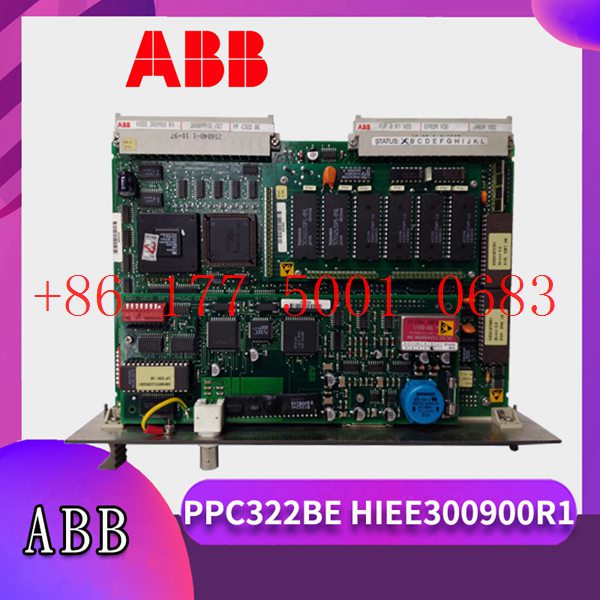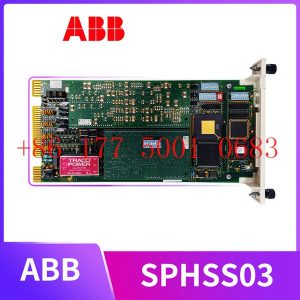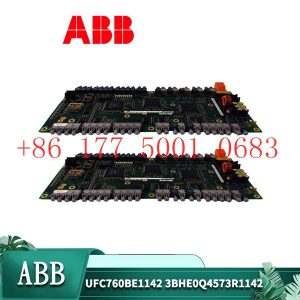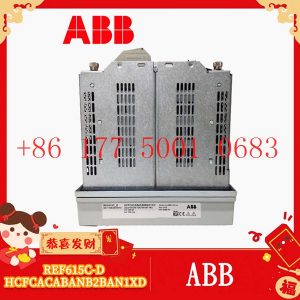Description
Experience of using FBP bus adapter in intelligent motor controller:
(1) Fieldbus can save a lot of costs
From the installation stage, only one communication cable is used to provide power and communication to the entire network. Compared with the point-to-point control method, a large number of cables, bridges, etc. are saved, which not only shortens
the installation time, but also reduces the cost. installation fee.
From a control point of view, the use of network communication and “soft” I/O methods saves I/O modules, especially analog modules. For example, for workstations such as intelligent motor controller UMC22 or frequency converters, start/stop, start mode,
acceleration/deceleration and other commands; parameters such as voltage, current , temperature, running time, etc. can all be realized from bus network communication.
(2) The equipment failure rate is greatly reduced, diagnosis is convenient, and elimination is rapid.
Because the FBP system uses only one communication cable to control the entire equipment network, the equipment failure rate is greatly reduced. The use of data communication to control each station not only greatly reduces the number of cables
in the traditional point-to-point method, but also greatly reduces fault links and further improves system stability.
The centralized control of the motor through the FBP system is very effective, which greatly facilitates the diagnosis of equipment faults. For example, when a certain intelligent motor controller UMC22 fails, not only can the alarm information be seen in the
central control room, but the alarm information can also be obtained from the operation panel of the UMC22, which is convenient and fast.
Engineering practice shows that 80% of bus faults occur in the bus cable itself, and the FBP system provides pre-installed cables with metal contacts to minimize the possibility of faults caused by cable problems.
(3) System monitoring is more convenient and intelligent.
The FBP system makes it more convenient for operators to access the working status of field stations and adjust control parameters at any time. Such as motor current, temperature and other parameters to ensure the normal operation of the motor.
(4) Plug and play (P&P) system expansion.
Because FBP adopts a “hand-in-hand” connection method, users can expand and insert the required monitoring objects in any link as needed.
Application 2 of ABB FBP bus adapter in intelligent motor controller:
Figure 5 Application of FBP and PDQ22 in smart motors
In Figure 5, the FBP system uses the PDQ22 device integrated with the Profibus protocol. Profibus and other fieldbuses use the standard RS 485 method. Each segment is limited to 32 master/slave stations. If more devices need to be connected, additional
devices are required. relay. Using PDQ22, you can connect 4 devices each to the Profibus DP bus, but as a node in the bus, you can save the number of bus nodes. Has the following characteristics:
Up to 4 FBP adapters can be used at one bus node;
Reliable system concept: detect equipment faults and indicate bus and equipment status;
Simple system integration: free access to parameters, operating and diagnostic data of connected devices; integrated maintenance management.
5. ABB FBP bus adapter is used in software configuration of intelligent motor controllers
PS501 programming software is used in this system. It uses ABB Codesys V2.3 programming software as the development environment, complies with the international standard of ICE61131-3, and can support statement list (IL), ladder diagram (LD),
and function block (FBD). , Sequential Function Chart (SFC), Structured Text (ST), and Continuous Function Chart (CFC) six programming languages. The complete setup of the AC500 system can
be completed, including all fieldbuses and interfaces, as well as comprehensive diagnostic functions, alarm handling, integrated visualization functions and open data interfaces.
Figure 6 FBP bus adapter configuration diagram in PS501 software
Figure 7 UMC22 monitoring interface (PS501 visualization function)
Excitation system ABB module SDCS-POW-4-SD
Excitation system ABB module SDCS-POW-4
Excitation system ABB module SDCS-POW-1C
Excitation system ABB module SDCS-POW-1
Excitation system ABB module SDCS-PIN-4B
Excitation system ABB module SDCS-PIN-48-SD
Excitation system ABB module SDCS-PIN-48-SD
Excitation system ABB module SDCS-PIN-48-COAT
Excitation system ABB module SDCS-PIN-4
Excitation system ABB module SDCS-PIN-205B
Excitation system ABB module SDCS-PIN-205B
Excitation system ABB module SDCS-IOE-2C
Excitation system ABB module SDCS-IOE-1
Excitation system ABB module SDCS-FEX-4A
Excitation system ABB module SDCS-FEX-4
Excitation system ABB module SDCS-FEX-2A
Excitation system ABB module SDCS-CON-4
Excitation system ABB module SDCS-CON-4
Excitation system ABB module SDCS-CON-2B
Excitation system ABB module SDCS-CON-2A
Excitation system ABB module SDCS-CON-2A
Excitation system ABB module SDCS-CON-2
Excitation system ABB module SDCS-CON-1
Excitation system ABB module SDCS-COM-81
Excitation system ABB module SDCS-COM-8
Excitation system ABB module SDCS-AMC-DC2
Excitation system ABB module SD853
Excitation system ABB module SD853
Excitation system ABB module SD834 3BSC610067R1
Excitation system ABB module SD834
Excitation system ABB module SD834
Excitation system ABB module SD833 3BSC610066R1
Excitation system ABB module SD833
Excitation system ABB module SD833
Excitation system ABB module SD832
Excitation system ABB module SD832
Excitation system ABB module SD831
Excitation system ABB module SD831
Excitation system ABB module SD831
Excitation system ABB module SD823
Excitation system ABB module SD822Z
Excitation system ABB module SD822
Excitation system ABB module SD821
Excitation system ABB module SD821
Excitation system ABB module SD812V1
Excitation system ABB module SD812F-Z
Excitation system ABB module SD812F 3BDH000014R1
Excitation system ABB module SD812F
Excitation system ABB module SD812F
Excitation system ABB module SD812F
Excitation system ABB module SD802F
Excitation system ABB module SD802F
Excitation system ABB module SD2048DL
Excitation system ABB module SD1024D-2-S
Excitation system ABB module SCYC55830 58063282A
Excitation system ABB module SCYC55830
Excitation system ABB module SCYC55830
Excitation system ABB module SCYC51090 58053899E
Excitation system ABB module SCYC51040 58052680E
Excitation system ABB module SCYC51020 58052582H
Excitation system ABB module SCYC51020 58052582G
Excitation system ABB module SCYC51020
Excitation system ABB module SCYC51010 58052515G
Excitation system ABB module SCYC51010
Excitation system ABB module SCC-CEL3020
Excitation system ABB module SCC-C
Excitation system ABB module SCB-01 3HNA011334-001
Excitation system ABB module SC610 3BSE001552R1
Excitation system ABB module SC610 3BSE001552R1
Excitation system ABB module SC610
Excitation system ABB module SC540 3BSE006096R1
Excitation system ABB module SC520M 3BSE016237R1
Excitation system ABB module SC520 3BSE003816R1
Excitation system ABB module SC513
Excitation system ABB module SC513
Excitation system ABB module SC510 3BSE003832R1
Excitation system ABB module SC510
Excitation system ABB module SB822 3BSE018172R1







Reviews
There are no reviews yet.